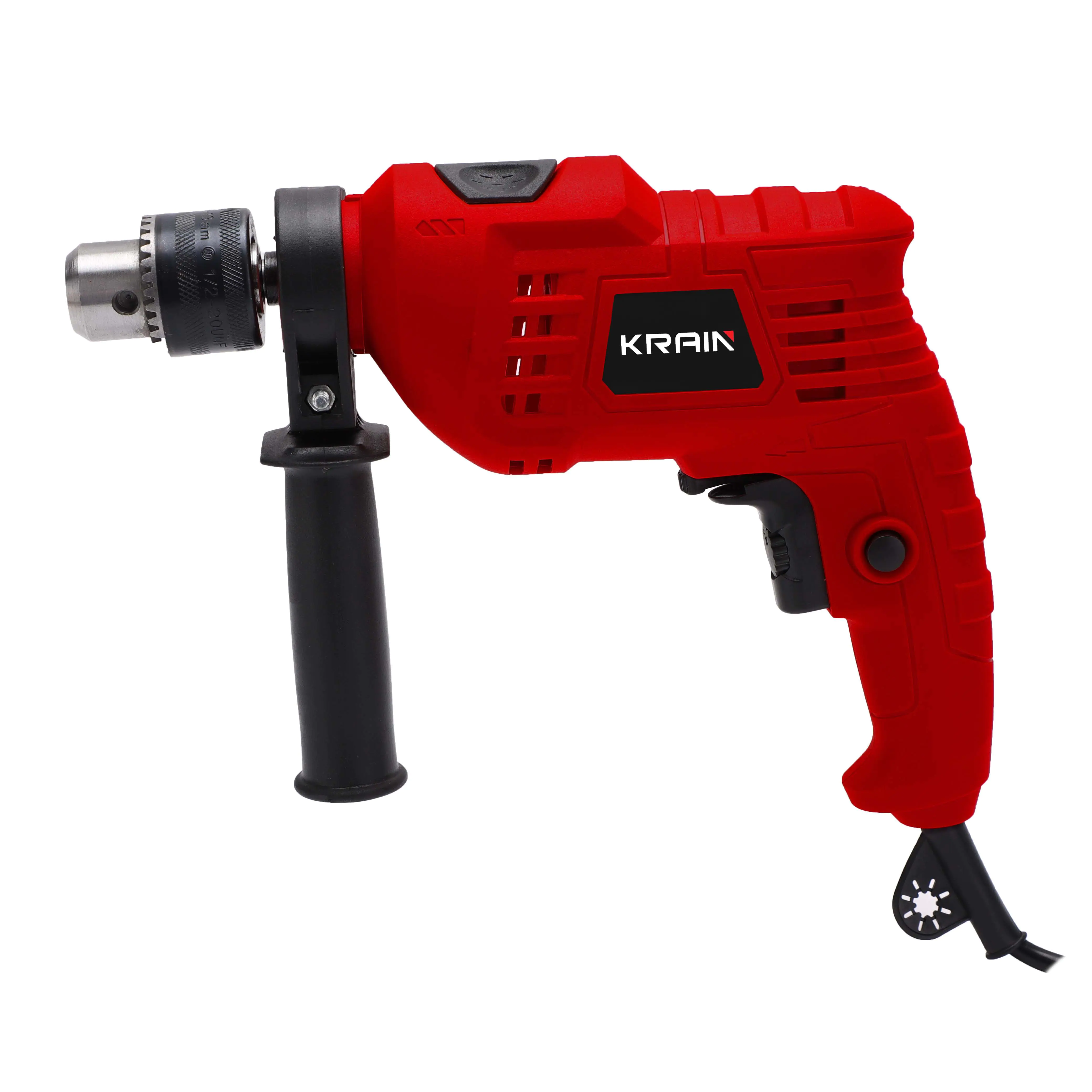Using an electric corded drill demands strict adherence to safety precautions to mitigate the risk of accidents and ensure a secure working environment. The following comprehensive guidelines are essential for users to consider when operating a corded drill.
1. Personal Protective Equipment (PPE): Always wear the necessary PPE, including safety glasses or a face shield to shield your eyes from potential debris, and hearing protection if the drill generates loud noise.
2. Clothing and Jewelry: Avoid wearing loose clothing, jewelry, or anything that might become entangled in the drill's moving parts. This precaution reduces the risk of accidents and injuries.
3. Work Area Safety: Ensure the work area is well-lit and free of clutter. Keep bystanders at a safe distance, and communicate the ongoing work to prevent accidental interference.
4. Power Source Inspection: Before use, thoroughly inspect the power cord for any signs of damage. Use a grounded outlet, and if an extension cord is necessary, choose one appropriate for the drill's power requirements. Keep the cord away from the drilling area and moving parts to prevent accidents.
5. Secure Workpiece: Firmly secure the workpiece using clamps or a vise to prevent unexpected movement during drilling. This ensures stability and accuracy in your work.
6. Proper Grip: Hold the drill with both hands, maintaining a firm grip on the handle and any provided auxiliary handle. A secure grip enhances control and reduces the risk of accidents.
7. Chuck and Drill Bit Safety: Before operation, ensure the drill bit is securely tightened in the chuck. Do not exceed the recommended maximum drill bit size, and avoid using bits that are damaged or worn to prevent accidents and maintain drilling efficiency.
8. Switching Off Procedures: Switch off the drill and disconnect it from the power source before changing drill bits or making any adjustments. This precaution minimizes the risk of accidental starts and enhances overall safety.
9. Adjust Speed Appropriately: Set the drill speed according to the material being drilled. Lower speeds are suitable for harder materials, while higher speeds work well for softer materials. This helps prevent overheating and enhances the efficiency of the drilling process.
10. Avoiding Excessive Force: Allow the drill to do the work without applying excessive force. Applying too much pressure can lead to a loss of control and compromise safety. Maintain a controlled and steady drilling pace.
11. Stability and Balance: Maintain a stable stance with balanced posture while operating the drill. This enhances control and reduces the risk of accidents, especially when dealing with challenging materials.
12. Overhead Drilling Caution: Exercise extra caution when drilling overhead to prevent the drill from accidentally falling. This includes ensuring a secure grip on the drill and taking measures to avoid potential falling debris.
13. Cooling Periods: During extended use, allow the drill to cool down at regular intervals. Overheating can compromise the drill's performance and pose safety risks.
14. Familiarity with the Manual: Read and understand the manufacturer's instructions and guidelines provided in the drill's manual. This ensures that you are aware of specific safety features and recommendations unique to your drill model.
15. Regular Maintenance: Regularly inspect and maintain the drill. This includes cleaning and lubricating moving parts to ensure optimal performance and prolong the life of the tool.
